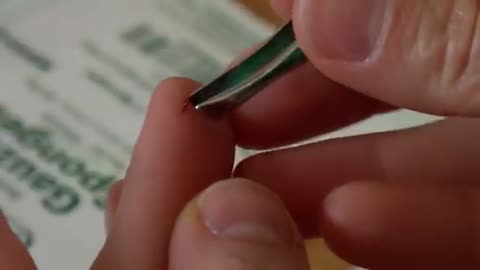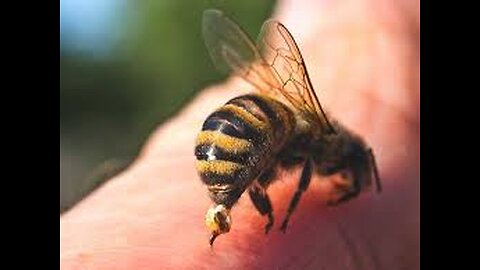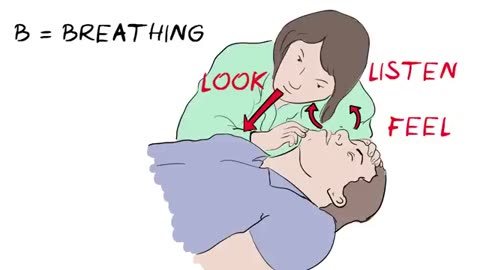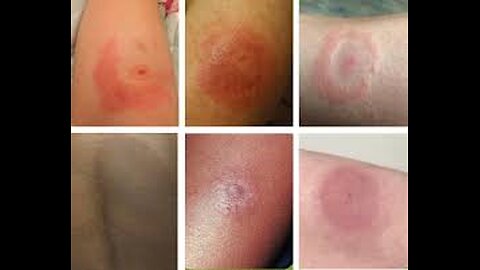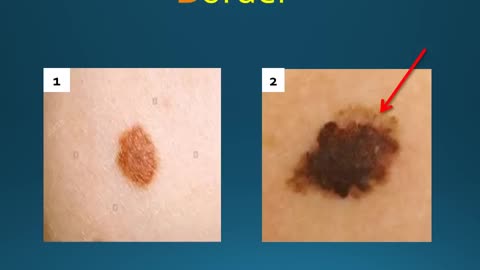-
How to Remove a Splinter
HHow ToMedical Conditions & Treatments : How to Remove a Splinter In order to remove a splinter, a sewing needle can be used to create an opening for the splinter to come out. Prevent a splinter from breaking into small pieces when trying to remove it214 views 2 comments -
Bee Sting - How to Treat Bee Stings
 F5TornadoHow to Treat a Bee Sting A bee sting is the wound and pain caused by the stinger of a female bee puncturing skin. Bee stings differ from insect bites, with the venom of stinging insects having considerable chemical variation. The reaction of a person to a bee sting may vary according to the bee species. While bee stinger venom is slightly acidic and causes only mild pain in most people, allergic reactions may occur in people with allergies to venom components A bee sting is a painful injury that happens after a bee pierces your skin and injects venom. You can treat minor bee stings at home. Sometimes, your body can react negatively to a bee sting, and it causes a severe allergic reaction that requires immediate medical attention. Pay attention to your surroundings to prevent bee stings A bee sting is a wound caused by a bee. A bee is a winged insect that has a barbed, thorn-shaped organ (stinger) at the end of its three-segmented body. These segments include the head, thorax and abdomen https://my.clevelandclinic.org/health/diseases/25093-bee-sting133 views 1 comment
F5TornadoHow to Treat a Bee Sting A bee sting is the wound and pain caused by the stinger of a female bee puncturing skin. Bee stings differ from insect bites, with the venom of stinging insects having considerable chemical variation. The reaction of a person to a bee sting may vary according to the bee species. While bee stinger venom is slightly acidic and causes only mild pain in most people, allergic reactions may occur in people with allergies to venom components A bee sting is a painful injury that happens after a bee pierces your skin and injects venom. You can treat minor bee stings at home. Sometimes, your body can react negatively to a bee sting, and it causes a severe allergic reaction that requires immediate medical attention. Pay attention to your surroundings to prevent bee stings A bee sting is a wound caused by a bee. A bee is a winged insect that has a barbed, thorn-shaped organ (stinger) at the end of its three-segmented body. These segments include the head, thorax and abdomen https://my.clevelandclinic.org/health/diseases/25093-bee-sting133 views 1 comment -
-
How Does a CT Scan Work
RRumble manCT images are more detailed than conventional x-ray images. Image slices that CT scans produce can be 2 or 3 dimensional and can reveal abnormal structures693 views -
The Heart and Circulatory System - How They Work
RRumble manThe Heart and Circulatory System - How They Work This animation features the heart and circulatory system and how they work218 views -
What Is Diabetes - 2 Minute Guide - Diabetes
RRumblestuffWhat Is Diabetes - 2 Minute Guide - Diabetes179 views 1 comment -
CPR basics - How to deliver first aid and CPR
HHow ToA simple animated video explaining how to deliver first aid and CPR177 views 2 comments -
Understanding Lyme Disease Rash - Medical Basics With Photos
 F5TornadoRecognizing a Lyme disease rash, when present, is important for early diagnosis. Although a Bull's-eye rash is the most well-known and recognizable Lyme disease rash presentation, it is not the most common. Lyme disease, also known as Lyme borreliosis, is a vector-borne disease caused by Borrelia bacteria, which are spread by ticks in the genus Ixodes.[3][8][9] The most common sign of infection is an expanding red rash, known as erythema migrans (EM), which appears at the site of the tick bite about a week afterwards.[1] The rash is typically neither itchy nor painful.[1] Approximately 70–80% of infected people develop a rash.[1] Early diagnosis can be difficult.[10] Other early symptoms may include fever, headaches and tiredness.[1] If untreated, symptoms may include loss of the ability to move one or both sides of the face, joint pains, severe headaches with neck stiffness or heart palpitations.[1] Months to years later, repeated episodes of joint pain and swelling may occur. More medical videos here https://rumble.com/playlists/Sz5pQBrWrY8236 views 3 comments
F5TornadoRecognizing a Lyme disease rash, when present, is important for early diagnosis. Although a Bull's-eye rash is the most well-known and recognizable Lyme disease rash presentation, it is not the most common. Lyme disease, also known as Lyme borreliosis, is a vector-borne disease caused by Borrelia bacteria, which are spread by ticks in the genus Ixodes.[3][8][9] The most common sign of infection is an expanding red rash, known as erythema migrans (EM), which appears at the site of the tick bite about a week afterwards.[1] The rash is typically neither itchy nor painful.[1] Approximately 70–80% of infected people develop a rash.[1] Early diagnosis can be difficult.[10] Other early symptoms may include fever, headaches and tiredness.[1] If untreated, symptoms may include loss of the ability to move one or both sides of the face, joint pains, severe headaches with neck stiffness or heart palpitations.[1] Months to years later, repeated episodes of joint pain and swelling may occur. More medical videos here https://rumble.com/playlists/Sz5pQBrWrY8236 views 3 comments -
Skin Cancer Education With Warning Signs Including Photos
 F5TornadoSkin Cancer Education With Warning Signs Including Photos Skin cancers are cancers that arise from the skin. They are due to the development of abnormal cells that have the ability to invade or spread to other parts of the body. Skin cancer is the most commonly diagnosed form of cancer in humans.[11][12][13] There are three main types of skin cancers: basal-cell skin cancer (BCC), squamous-cell skin cancer (SCC) and melanoma. The first two, along with a number of less common skin cancers, are known as nonmelanoma skin cancer (NMSC). Basal-cell cancer grows slowly and can damage the tissue around it but is unlikely to spread to distant areas or result in death. It often appears as a painless raised area of skin that may be shiny with small blood vessels running over it or may present as a raised area with an ulcer.[1] Squamous-cell skin cancer is more likely to spread. It usually presents as a hard lump with a scaly top but may also form an ulcer. Melanomas are the most aggressive. Signs include a mole that has changed in size, shape, color, has irregular edges, has more than one color, is itchy or bleeds More medical videos here https://rumble.com/playlists/Sz5pQBrWrY8219 views
F5TornadoSkin Cancer Education With Warning Signs Including Photos Skin cancers are cancers that arise from the skin. They are due to the development of abnormal cells that have the ability to invade or spread to other parts of the body. Skin cancer is the most commonly diagnosed form of cancer in humans.[11][12][13] There are three main types of skin cancers: basal-cell skin cancer (BCC), squamous-cell skin cancer (SCC) and melanoma. The first two, along with a number of less common skin cancers, are known as nonmelanoma skin cancer (NMSC). Basal-cell cancer grows slowly and can damage the tissue around it but is unlikely to spread to distant areas or result in death. It often appears as a painless raised area of skin that may be shiny with small blood vessels running over it or may present as a raised area with an ulcer.[1] Squamous-cell skin cancer is more likely to spread. It usually presents as a hard lump with a scaly top but may also form an ulcer. Melanomas are the most aggressive. Signs include a mole that has changed in size, shape, color, has irregular edges, has more than one color, is itchy or bleeds More medical videos here https://rumble.com/playlists/Sz5pQBrWrY8219 views -
How To Properly Treat and Wrap a Sprained Ankle - First Aid - ankle sprain
HHow ToHow To Properly Treat and Wrap a Sprained Ankle - First Aid An injury that occurs when the ankle rolls, twists or turns in an odd way. A sprained ankle occurs when an ankle rolls, twists or turns in a way it isn't meant to move. This can stretch or tear the tough bands of tissue, known as ligaments, that help hold the ankle bones together. Most injuries occur on the outside of the ankle. The main symptom is pain, especially when putting weight on the ankle. Other symptoms include swelling, bruising and not being able to move the ankle much. Treatment for a sprained ankle depends on how bad the injury is. Many people treat a sprained ankle at home with rest, ice and pain relievers. More medical videos here https://rumble.com/playlists/Sz5pQBrWrY8133 views 1 comment
